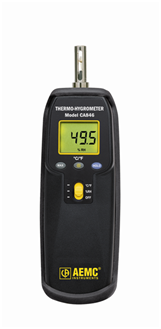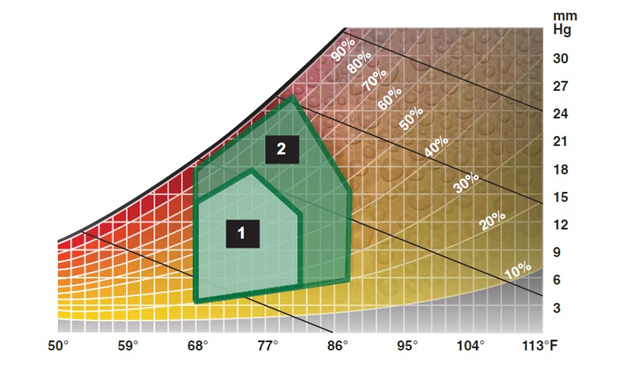Why Check the Level of Humidity?
 Maintaining an appropriate level of humidity is imperative, for hygienic reasons and for energy efficiency.
Maintaining an appropriate level of humidity is imperative, for hygienic reasons and for energy efficiency.
An excess of humidity in the air is easily identified by the appearance of mold, peeling wallpaper or rust on iron objects and reoccurring condensation on cold surfaces.
Furthermore, even though the humidity level plays a secondary role in times of cold weather, it becomes increasingly important in relation to ambient temperature. This is because evaporation decreases as the level of humidity increases (thus the “hot and muggy” sensation in very humid weather). By slowing down the evaporation of moisture, the level of humidity generates a thermal discomfort proportional to the wet surface.
Different installations and equipment regulate the humidity level: air conditioning systems, controlled mechanical ventilation systems and dehumidifiers. To test their efficiency, it is important to periodically check the humidity level. Generally, the ideal, maximum comfort humidity level is between 30 and 40%.
The CA846 uses a Negative Temperature Coefficient (NTC) sensor and a capacitive humidity sensor. A three position switch is used to select the temperature (°C/ °F), relative humidity or OFF positions.
How to know if the humidity level is operating to optimal comfort?

Zone one corresponds to the comfort zone with air movement.
Zone two corresponds to the comfort zone without air movement.
Source: AEMC
